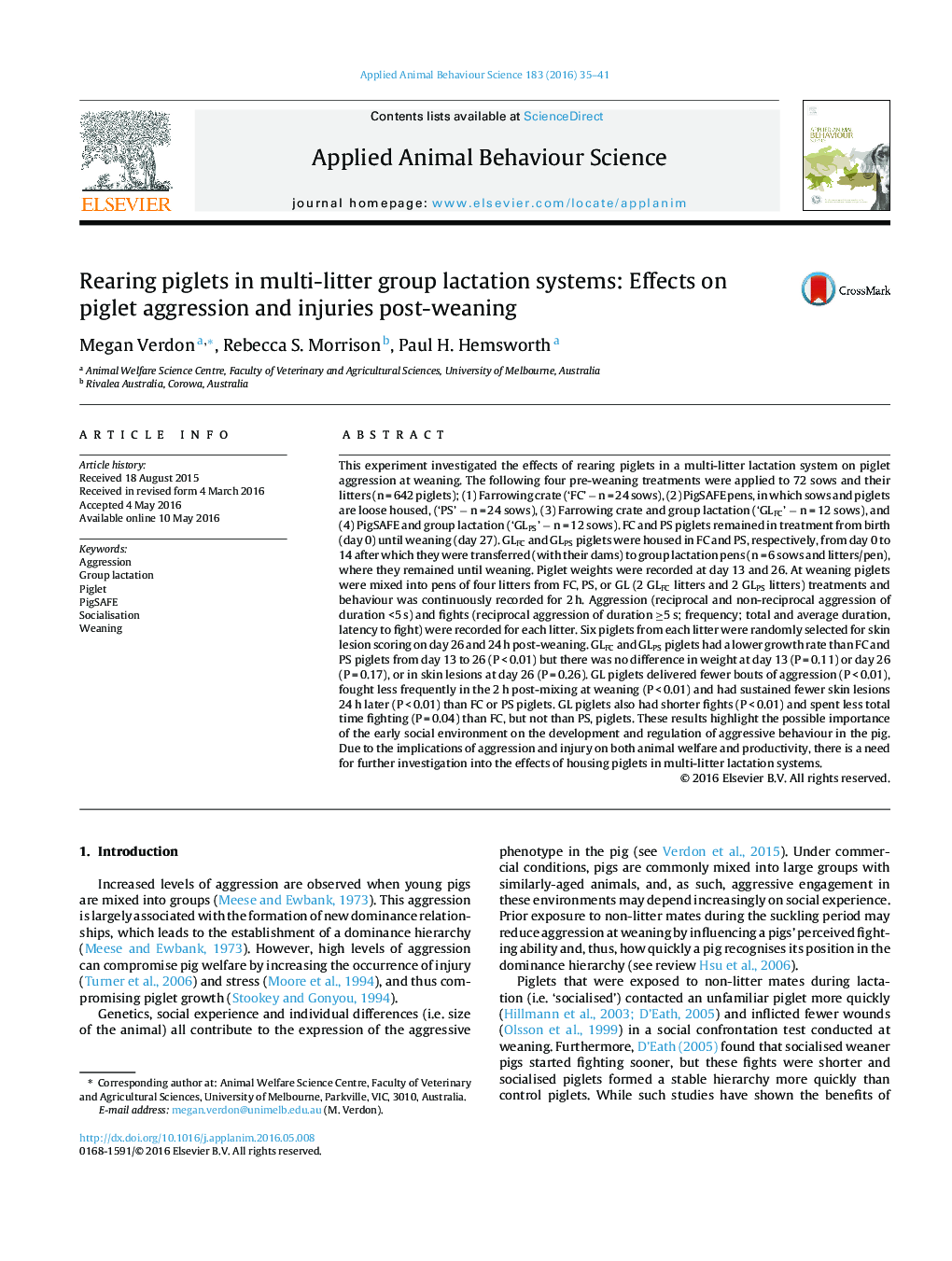| کد مقاله | کد نشریه | سال انتشار | مقاله انگلیسی | نسخه تمام متن |
|---|---|---|---|---|
| 4522350 | 1625323 | 2016 | 7 صفحه PDF | دانلود رایگان |
• Early social environment can affect the development of aggression in the pig.
• Group lactation piglets have reduced aggression and skin injuries post-weaning.
• Group lactation piglets have a lower growth rate during lactation.
• Long-term effects of lactation housing on pig welfare needs further investigation.
This experiment investigated the effects of rearing piglets in a multi-litter lactation system on piglet aggression at weaning. The following four pre-weaning treatments were applied to 72 sows and their litters (n = 642 piglets); (1) Farrowing crate (‘FC’ − n = 24 sows), (2) PigSAFE pens, in which sows and piglets are loose housed, (‘PS’ − n = 24 sows), (3) Farrowing crate and group lactation (‘GLFC’ − n = 12 sows), and (4) PigSAFE and group lactation (‘GLPS’ − n = 12 sows). FC and PS piglets remained in treatment from birth (day 0) until weaning (day 27). GLFC and GLPS piglets were housed in FC and PS, respectively, from day 0 to 14 after which they were transferred (with their dams) to group lactation pens (n = 6 sows and litters/pen), where they remained until weaning. Piglet weights were recorded at day 13 and 26. At weaning piglets were mixed into pens of four litters from FC, PS, or GL (2 GLFC litters and 2 GLPS litters) treatments and behaviour was continuously recorded for 2 h. Aggression (reciprocal and non-reciprocal aggression of duration <5 s) and fights (reciprocal aggression of duration ≥5 s; frequency; total and average duration, latency to fight) were recorded for each litter. Six piglets from each litter were randomly selected for skin lesion scoring on day 26 and 24 h post-weaning. GLFC and GLPS piglets had a lower growth rate than FC and PS piglets from day 13 to 26 (P < 0.01) but there was no difference in weight at day 13 (P = 0.11) or day 26 (P = 0.17), or in skin lesions at day 26 (P = 0.26). GL piglets delivered fewer bouts of aggression (P < 0.01), fought less frequently in the 2 h post-mixing at weaning (P < 0.01) and had sustained fewer skin lesions 24 h later (P < 0.01) than FC or PS piglets. GL piglets also had shorter fights (P < 0.01) and spent less total time fighting (P = 0.04) than FC, but not than PS, piglets. These results highlight the possible importance of the early social environment on the development and regulation of aggressive behaviour in the pig. Due to the implications of aggression and injury on both animal welfare and productivity, there is a need for further investigation into the effects of housing piglets in multi-litter lactation systems.
Journal: Applied Animal Behaviour Science - Volume 183, October 2016, Pages 35–41
